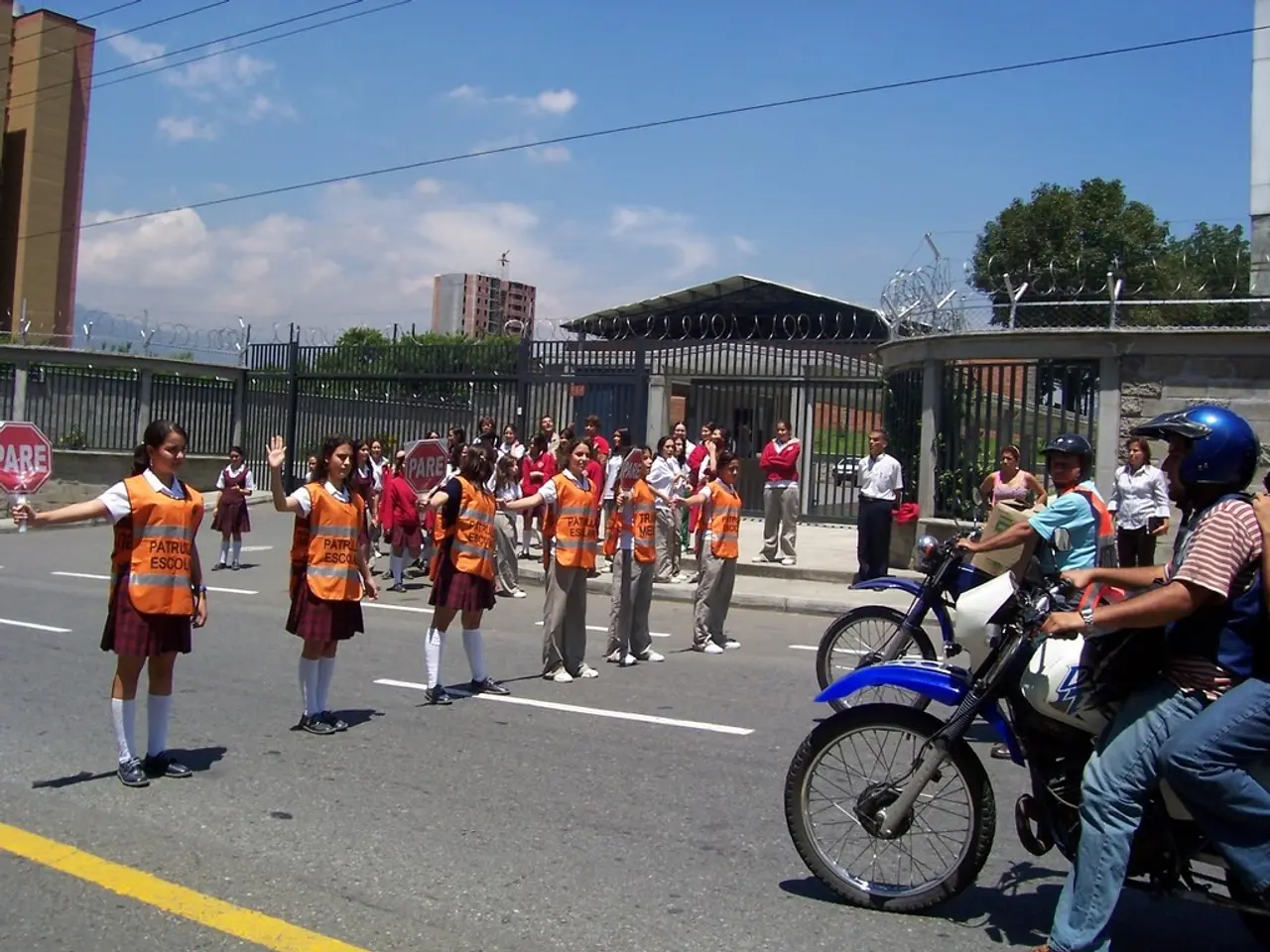Propose a restriction on parents utilizing taxis for school drop-offs?
In the city of Bremen, the debate on promoting safe and sustainable school travel has gained momentum. With a growing concern for children's safety and the environment, two approaches have emerged: safe school routes and car-free school streets.
Safe School Routes aim to provide children with safer paths to travel to school. These routes are designed with improved crosswalks, traffic calming measures, clearer signage, and separated bike lanes along key routes children commonly use. The goal is to make the entire journey to school safer, encouraging active travel modes like walking and cycling.
On the other hand, Car-Free School Streets, or school streets, involve closing the street immediately around schools to motorized traffic, often during drop-off and pick-up times. This creates a pedestrian-priority zone during these periods, restricting cars from entering the vicinity of the school. The intention is to create a safe, vehicle-free zone immediately outside schools, reducing traffic-related anxiety and improving air quality.
While both approaches share a common goal of enhancing school travel safety, they have distinct advantages and challenges.
Arguments For Safe School Routes: - They provide children with safe, continuous paths to travel to school from various parts of the neighborhood. - Encourage walking and cycling by reducing risks on the entire route, not only near the school. - Can complement existing urban transportation infrastructure. - Usually less disruptive to local traffic patterns compared to complete street closures.
Arguments Against Safe School Routes: - Implementation can be complex and costly if it requires extensive infrastructure changes. - Safety improvements might be insufficient if traffic volumes and speeds remain high near schools. - Does not eliminate car traffic near the school entrances, so air pollution and congestion may persist.
Arguments For Car-Free School Streets: - Creates a safe, vehicle-free zone immediately outside schools, improving safety for children and reducing traffic-related anxiety. - Reduces air pollution and noise around school entrances during key traffic times. - Encourages more active travel modes by providing an inviting space. - Often popular with parents, school staff, and children for increasing perceived safety.
Arguments Against Car-Free School Streets: - Can displace traffic and cause congestion on surrounding streets, potentially increasing risk elsewhere. - May inconvenience parents who rely on car drop-offs, or complicate access for residents and businesses. - Enforcement challenges may arise, requiring monitoring and cooperation. - Opposition from motorists or nearby residents concerned about traffic spillover.
Bremen, like many German cities, promotes active mobility and safe school travel through policies encouraging cycling and walking. Given Bremen’s urban setting, car-free school streets can significantly improve immediate safety and air quality, but need to be balanced with managing traffic flows to prevent shifting dangers elsewhere. Safe school routes support broader active travel but must be maintained and coupled with effective traffic calming.
The political efforts of the red-green-red government should focus on safe school routes, good public transportation connections, or the promotion of walking and carpooling. Shifting traffic to surrounding streets due to a ban on dropping off children at school could create new safety and traffic problems.
For detailed information specifically about Bremen's current initiatives or local debates, I recommend consulting Bremen’s city transport or urban planning department publications or local news sources.
- In the realm of education-and-self-development, discussing the importance of safe and sustainable transportation options for students is becoming increasingly important in discussions.
- Other cities, similar to Bremen, might find implementing Car-Free School Streets beneficial in improving short-term safety and air quality at schools, but should also take care to manage traffic flows and prevent shifting dangerous situations elsewhere.
- Finance and politics can play a significant role in promoting safe school routes, with the red-green-red government in Bremen focusing on policies encouraging cycling, walking, and public transportation, as well as carpooling, to ensure a safer journey for students.




